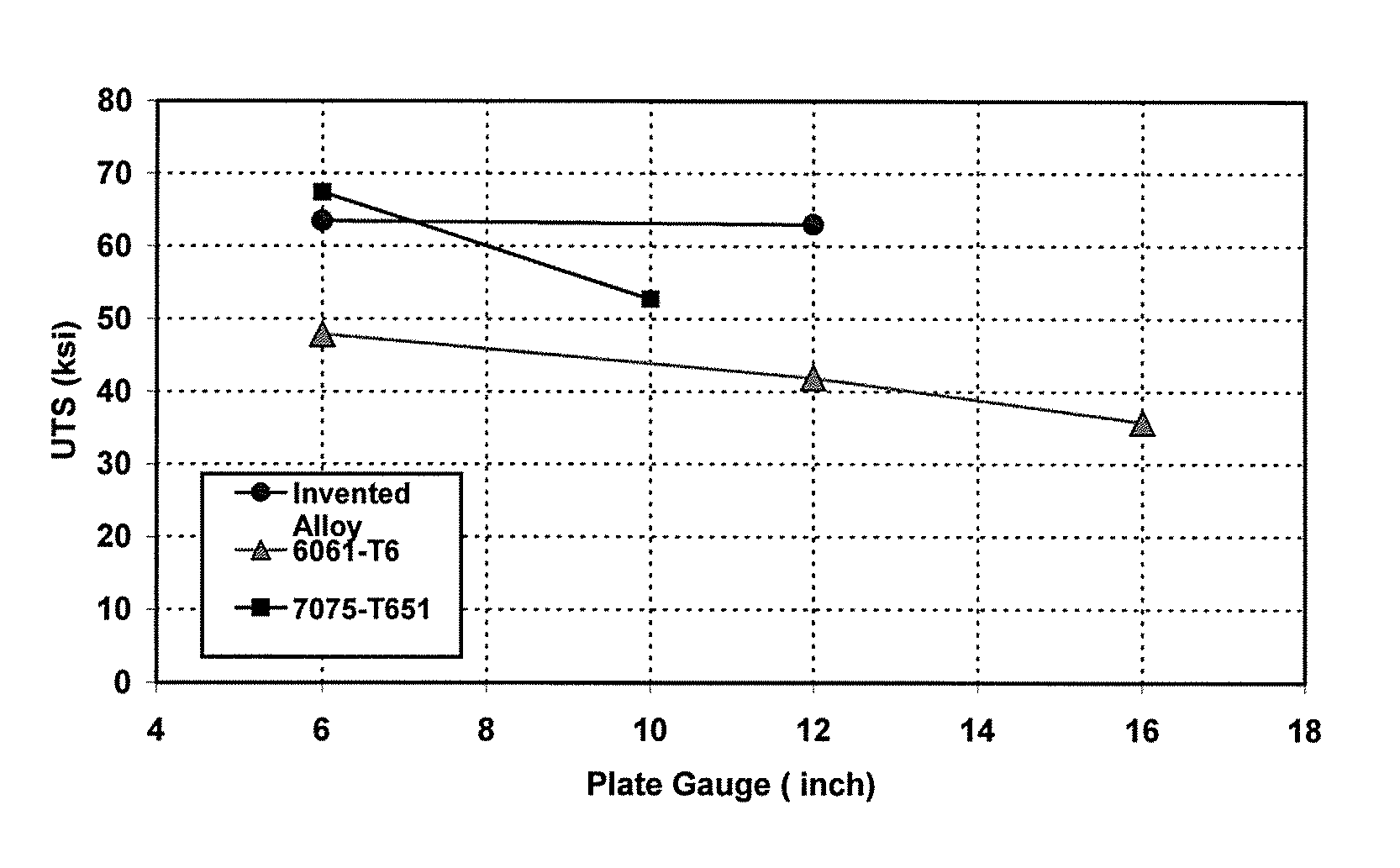High Strength, Heat Treatable Aluminum Alloy
a technology of aluminum alloy and heat treatment, applied in the field of high strength, can solve the problems of raising internal residual stress, insufficient quenching of thick gauge wrought products, and very ineffective age hardening process, and achieve the effect of maximizing the strengthening effect of mgzn2 and maximizing the formation of mgzn2
- Summary
- Abstract
- Description
- Claims
- Application Information
AI Technical Summary
Benefits of technology
Problems solved by technology
Method used
Image
Examples
example 1
[0034] Nine aluminum alloys were cast as a 7″ diameter round billet, having a chemical composition as listed in Table 1.
[0035] The billet were homogenized for 24 hours at a temperature range of 850° F. to 890° F. The billet were then hot rolled to form a 1″ thick plate at a temperature range of 600° F. to 850° F. The final thickness of 1″ was used to evaluate the quench sensitivity of the alloy by employing various slow cooling processes in order to simulate the quench process of ultra thick gauge wrought product. The plates were divided into two or three pieces (piece A, piece B and piece C) for comparison of different quench rates after solution heat treatment. Piece A was solution heat treated at 885° F. for 1.5 hours and air cooled (still air) for slow quench rate of 0.28-0.30° F. / sec. Piece B was solution heat treated at 885° F. for 1.5 hours and quenched by fan-moved air for a quench rate of 0.70-0.75° F. / sec. Piece C was solution heat treated at 885° F. for 2 hours and cold ...
example 2
[0041] A full commercial size ingot with a target chemistry of Alloy #6 defined above was cast for a plant scale production trial. The actual chemical composition is listed in Table 5 (Sample 10). The 18 inch thick, 60 inch wide, and 165 inch long ingot was homogenized at a temperature range of 900° F. to 940° F. for 24 hours. The ingot was pre heated to 900° F. to 920° F. and hot rolled to 6 inch gauge plate at a temperature range of 740° F. to 840° F.
[0042] The 6 inch thick plate was solution heat treated at 940° F. for 20 hours and cold water quenched. The plate was stress relieved by cold stretching at a nominal amount of 2%. The plate was age hardened by an artificial aging of 16 hours at 280° F. The final mechanical properties are shown in the Table 6. Corrosion behavior was satisfactory.
[0043] Another full commercial size ingot with a target chemistry of Alloy #6 above was cast for a plant scale production trial. The actual chemical composition is listed in Table 5 (Sample ...
PUM
| Property | Measurement | Unit |
|---|---|---|
| ultimate tensile strength | aaaaa | aaaaa |
| ultimate tensile strength | aaaaa | aaaaa |
| thickness | aaaaa | aaaaa |
Abstract
Description
Claims
Application Information
 Login to View More
Login to View More - R&D
- Intellectual Property
- Life Sciences
- Materials
- Tech Scout
- Unparalleled Data Quality
- Higher Quality Content
- 60% Fewer Hallucinations
Browse by: Latest US Patents, China's latest patents, Technical Efficacy Thesaurus, Application Domain, Technology Topic, Popular Technical Reports.
© 2025 PatSnap. All rights reserved.Legal|Privacy policy|Modern Slavery Act Transparency Statement|Sitemap|About US| Contact US: help@patsnap.com



